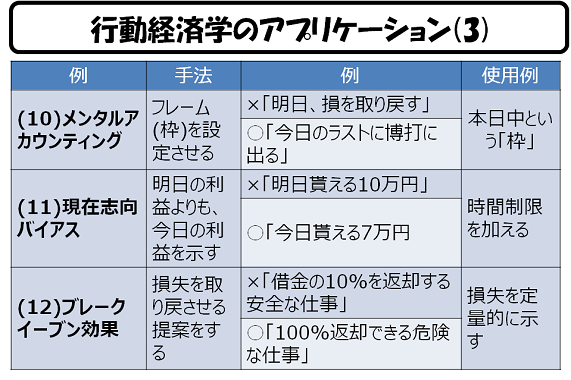NHKの「四大化計画 世界は3つで語れない」という番組が、(多分番組編成の影響?で)、我が家のHDDレコーダに録画されていました。
NHK's program, "The Four Great Plans: We cannot The World in Three Parts," was recorded on our HDD recorder (probably due to a missed program operation). The program is left on our HDD recorder.
今回が初見でしたが、『超ド級の衝撃映像ぞくぞく!世界のハードワーク特集』は、凄く面白かったです。
It was my first time seeing the program, but "Super Duper Shocking Footage! The World's Hardest Work" was very interesting.
もう定番化決定です。
I have already decided to make it a regular program.
私たちの社会インフラが、どれだけの人の努力によって支えられているかを、再度思い知らされる内容でした。
It was a reminder once again of how much of our social infrastructure is supported by the efforts of so many people.
-----
私、阪神・淡路大震災(1995年1月17日)、3日間だけボランティアに参加してきて、その時のことをコラムとして纏めました。
I participated in the Hanshin-Awaji Earthquake (January 17, 1995) as a volunteer for only three days, and I have summarized my experiences in this column.
その後、ガス会社に努めていた大学の後輩から、『40日間、現場のプレハブで雑魚寝して、それ以外の時間以外は、泥まみれになりながら、ずっと土を掘って、配管工事をしていた』という、リアルな災害現場の活動を聞かされました。
Later, a junior college student who worked for a gas company told me about real disaster site activities: 'For 40 days, we slept in prefabs on site, and the rest of the time, we were covered in mud, digging in the dirt all the time and working on piping.
それを聞いて、私は、
When I heard the above, and I remembered,
―― 偉そうにコラムなんか書いていた自分が、とてつもなく恥かしくなってきた
"I was incredibly ashamed of myself for writing such a pompous column."
ことを覚えています。
-----
もちろん、このような羞恥心は大切だと思いますが、それでも、自分の無力さに萎縮してボランティアを取り止めるよりは、ずっと良いのです。
Of course, this sense of shame is essential, but it is still much better than withdrawing from volunteering because your helplessness so deflates you.
小さい貢献でもゼロよりは圧倒的にいい。「偽善の善」でも善は善です。
Even a tiny contribution is far better than zero. "Good" is "good," even if it is "hypocritical good."
偽善者
-----
で、今になって、開き直って考えているんですが、
And now, I'm thinking about reopening it, and I have a feeling that this is the case,
―― みんな、もっともっと語って、記録を残そうよ
"Let's all talk more and more and keep track!"
という気持ちになっています。
私のような、ちょっとしたボランティアの活動の報告だけでも、役に立つことがある(かもしれない)のです。
Even a small report of a volunteer's activities, such as mine, may (or may not) be helpful.
「その時の状況、その時の気持ちを、その時できる力だけでいいから、できるだけ残そうよ」と思うのです。
I think, "Let's preserve as much as we can of the situation and the feelings we had at the time."
人の記憶は当てになりません。
People's memories are unreliable.
写真や映像は状況を伝えますが、"心"を伝えることは難しいです。
Photographs and videos can convey the situation, but it is difficult to describe the "heart."
-----
「自分のことを語るのは、恥しい」というのは、当然だと思います。
I think it's fair to say that "it's embarrassing to talk about yourself."
しかし、それでも語り続けることが、誰かの役に立っているかもしれません。
But still, continuing to tell the story may be helpful to someone.
また、「自分の気持ちが上手く表現できない」というのも、分かります。
I also understand that "you cannot express your feelings well.
言語化という作業は、誰にとっても、本当に難しいのです(面倒くさいし、誤解されることもありますし)。
The verbalization task is challenging for everyone (it is annoying and misunderstood).
それでも、『40日間、現場のプレハブで雑魚寝して、それ以外の時間以外は、ずっと土を掘って、配管工事をしていた』が、たとえ個人のメモであったとしても ――
Even if 'For 40 days, we slept in prefabs on site, and the rest of the time, we were covered in mud, digging in the dirt all the time and working on piping' was just private notes,
その40日分の記録とその公開は、何かの役に立ち、誰かの心を揺さぶるかもしれません。
The record of those 40 days and its publication may be helpful and even touch someone's heart.
-----
あらためて、『国語の勉強は大切で、そして、特に作文は大切だ』と、今、実感しております。
Once again, I realize now that 'studying Japanese is essential, and writing essays is especially important.
加えて、自分の日記を世間に公開する「ふてぶてしさ」...もとい「度胸」の育成ですね。
In addition, we also need to cultivate the "frumpiness" of publishing my diary to the world.
大丈夫です。
Don't worry.
あなたの(そして私の)メモなんぞ、あなたや私が死んだ後、1年以内に、プロバイダへの料金不払いで、全部削除されますから。
Someone will delete your (and my) notes within a year after you or I die for non-payment of fees to the provider.
